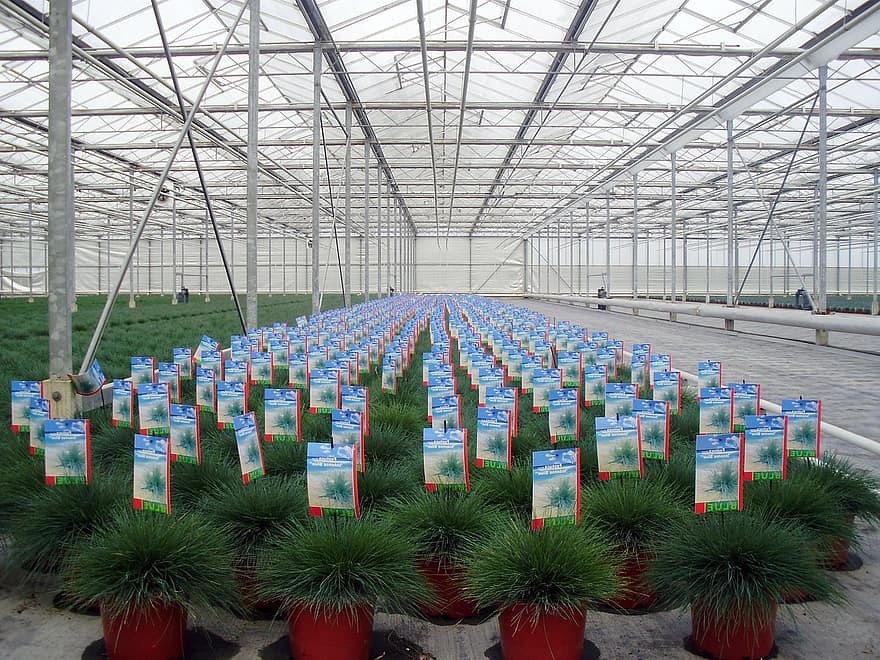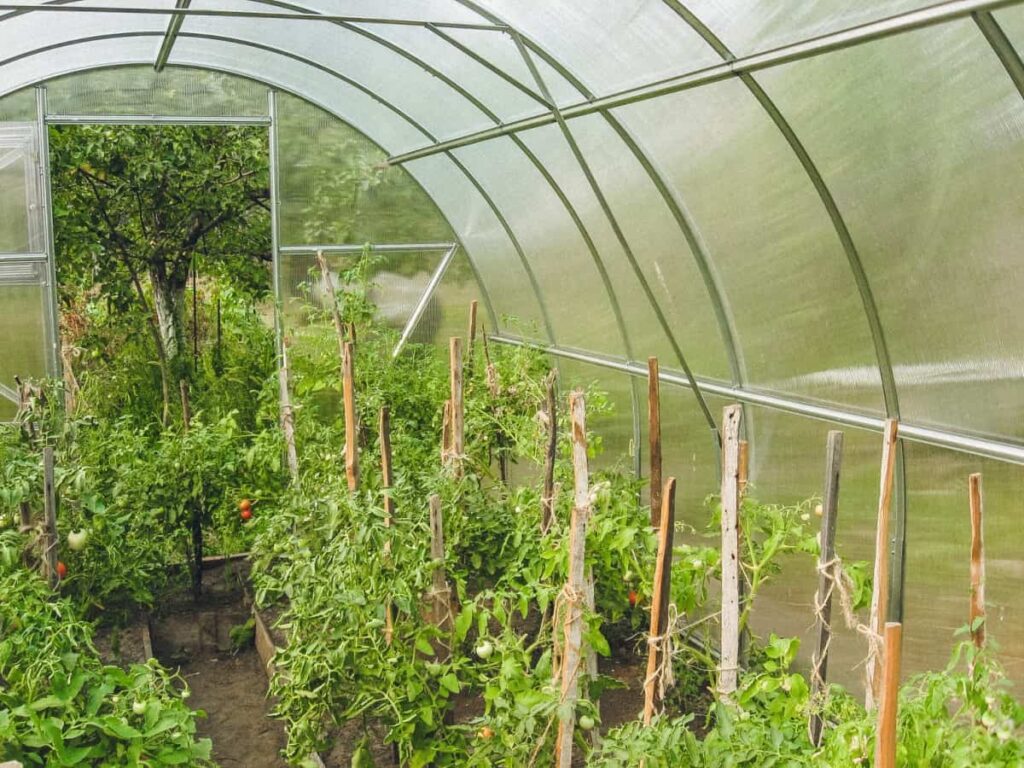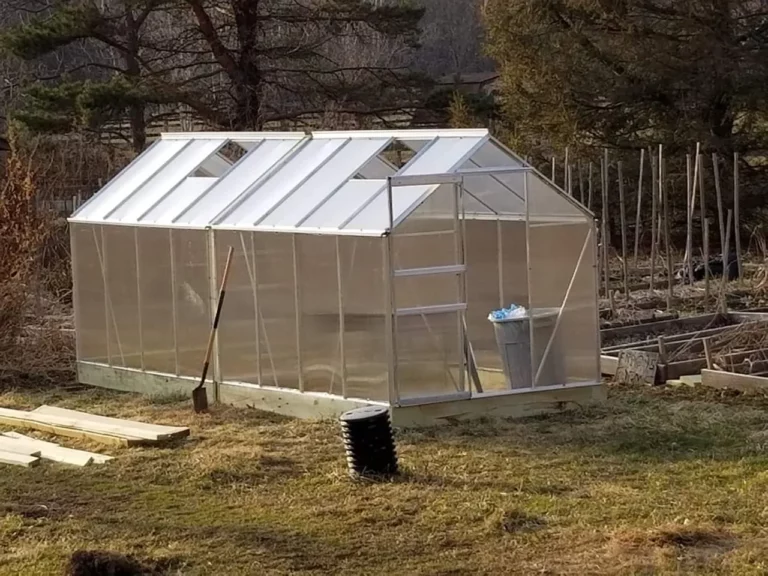One breezy afternoon, I was walking in my garden, admiring the healthy plants inside my greenhouse. I had tomatoes, cucumbers, and beautiful flowers thriving there, which made me proud of my gardening efforts. But it was that very breeze, a reminder of nature’s unpredictability, that got me interested in understanding how to keep my greenhouse stable.
I decided to learn more about greenhouse gardening, so I read books, browsed online forums, and talked to fellow garden enthusiasts. What I discovered was that a greenhouse, despite being a protective haven for plants, relies heavily on something often overlooked: proper anchoring. This became the starting point of my exploration.
Join me on this captivating journey to unlock the mysteries of greenhouse anchoring.
To anchor a greenhouse effectively follow these quick steps :
- Choose a suitable location with good drainage.
- Clear and level the ground.
- Assemble the greenhouse frame, ensuring it’s level.
- Use sturdy anchor stakes/posts at corners and sides.
- Optionally, use auger-style ground anchors for extra stability.
- Attach the frame securely to the anchors with hardware.
- Consider concrete footings for added stability.
- Keep the greenhouse level and regularly tighten anchors.
- Add extra bracing if needed.
- Maintain and inspect the anchors over time for durability and stability.
How to Prepare the Perfect Location for Your Greenhouse?

Creating the ideal foundation for your greenhouse begins with careful site selection and thorough preparation.
Selecting a Suitable Site:
When choosing a location for your greenhouse, several factors should be considered:
- Sunlight: Ensure the site receives adequate sunlight throughout the day. Greenhouse crops require at least 6 hours of direct sunlight for optimal growth.
- Drainage: Check that the chosen area has good natural drainage to prevent waterlogging. Poor drainage can damage plants and weaken the greenhouse’s foundation.
- Proximity to Utilities: Ideally, place the greenhouse near a water source and electricity if you plan to use them for irrigation or heating.
- Wind Protection: Consider natural windbreaks, like buildings or trees, that can shield the greenhouse from strong winds.
- Accessibility: Ensure easy access for you to tend to your plants and for transporting materials in and out of the greenhouse.
Clearing Debris and Leveling the Ground:
Before installing your greenhouse, it’s crucial to prepare the ground properly:
- Clear Debris: Remove any rocks, sticks, weeds, or other debris from the chosen site. These can obstruct the greenhouse’s base and hinder proper anchoring.
- Leveling the Ground: The ground should be as level as possible to ensure the greenhouse frame sits evenly. Moreover, use a shovel and a level tool to create a flat surface. If the ground is uneven, consider using a layer of sand or gravel to level it.
How Do Properly Perform Greenhouse Frame Assembly?
Building a sturdy and efficient greenhouse starts with the precise assembly of its frame, a key step in ensuring the structure’s durability and functionality.
Assembling the Frame:
Assembling the greenhouse frame is a crucial step in the installation process:
Carefully read and follow the manufacturer’s instructions for assembling the frame. Each greenhouse model may have specific requirements.
Before assembly, check that you have all the necessary parts and hardware. Organize them for easy access during assembly.
Assemble the frame methodically, starting with the base and working your way up. Ensure all connections are secure but avoid over-tightening bolts or screws, which can distort the frame.
Ensuring the Frame Is Level and Square:
A level and square frame are essential for the stability and proper functioning of the greenhouse:
Use a carpenter’s level to confirm that the frame is level both lengthwise and widthwise. Adjust as needed by adding or removing soil or shims.
Additionally, ensure the frame is square, measure the diagonals from corner to corner. The measurements should be equal. If not, adjust the frame until they are.
What’s the Ideal Anchor Stake/Post Placement for a Greenhouse?
The choice of anchor stakes or posts depends on factors such as your greenhouse design and local conditions:
Materials: Anchor stakes/posts are typically made of metal or heavy-duty plastic. Consider durability and resistance to corrosion.
Design: Different greenhouse designs may require different anchoring methods. Consult the manufacturer’s recommendations for your specific model.
Local Conditions: Consider the local climate and soil conditions. In areas with high wind or loose soil, choose more robust anchor options.
Proper Spacing and Placement:
The placement of anchor stakes/posts is crucial for stability:
Spacing: Ensure you place anchor stakes/posts at regular intervals along the greenhouse perimeter. The recommended spacing is typically every 4 to 6 feet, but consult your greenhouse’s manual for precise guidance.
Depth: Drive or embed the anchor stakes/posts deep enough into the ground to provide adequate support. The depth may vary based on local conditions and the type of anchor used.
How to Properly Attach Anchoring Hardware?
The choice of hardware for attaching the greenhouse frame to anchor stakes or posts is essential for stability and durability:
Types of Hardware (Bolts, Screws, Washers, Nuts):
- Bolts: Heavy-duty bolts are commonly used. They are strong and resist shearing forces.
- Screws: Large, self-tapping screws can also be used, especially when securing the frame to wooden anchor stakes.
- Washers: Washers distribute pressure and prevent hardware from pulling through greenhouse frame components.
- Nuts: Nuts are used in combination with bolts to secure the connection. Nylock nuts with nylon inserts are excellent for preventing loosening due to vibrations.
Securing the Frame to Anchor Stakes or Posts:
To ensure a robust connection between the greenhouse frame and anchor stakes/posts:
- Positioning: Align the frame’s attachment points with the anchor stakes/posts.
- Drill Pilot Holes: If necessary, drill pilot holes through the frame to prevent splitting or cracking.
- Attach Hardware: Insert the bolts or screws through the frame and into the anchor stakes/posts. Place washers and nuts on the opposite side.
- Tighten Securely: Use a wrench or pliers to tighten the nuts securely. Be careful not to overtighten and damage the frame or strip the threads.
What’s the Best Way to Achieve Leveling in a Greenhouse?
Leveling a greenhouse is the foundation of successful cultivation; discover the essential steps to ensure a perfectly even surface for optimal plant growth.
Using a Level Tool:
Properly leveling your greenhouse is essential for its structural integrity and the well-being of your plants. Here’s how to use a level tool effectively:
A long, straight spirit level is commonly used for this task. Ensure it’s long enough to span the width and length of your greenhouse.
Place the level tool at various locations on the frame, including along the sides and diagonally. This provides a comprehensive assessment of the greenhouse’s levelness.
However, if the level indicates that the frame is not level, make adjustments by adding or removing soil or shims beneath the anchor stakes or posts until the bubble in the level is centered.
Adjusting Anchor Stakes or Posts for Proper Leveling:
Achieving a level greenhouse may require some adjustments to the anchor stakes or posts:
If your anchor stakes or posts are already secured to the frame, you may need to loosen the hardware connecting them temporarily to make adjustments.
In addition, depending on the situation, you can add shims or additional soil beneath the anchor stakes/posts to achieve the desired level.
After making adjustments, re-tighten the hardware to ensure that the frame is securely anchored and level.
How Do Ensure Effective Tightening and Securing in Greenhouses?

Properly securing all hardware is crucial for maintaining the stability of your greenhouse:
Periodically inspect all bolts, screws, washers, and nuts to ensure they remain tightly fastened. This is especially important after heavy weather conditions or over time as materials may settle.
However, if you notice any damaged or corroded hardware, replace it immediately. Corrosion weakens the connections and can compromise the stability of the frame.
Periodic Checks and Maintenance:
To maintain the integrity of your greenhouse’s anchoring system:
- Set a Schedule: Establish a maintenance schedule for checking and tightening hardware. This could be seasonal or based on local weather patterns.
- Inspect for Wear: Regularly inspect the anchor stakes/posts, frame components, and any additional bracing for signs of wear, damage, or rust.
- Lubricate Moving Parts: If your greenhouse has movable parts, such as doors or vents, lubricate hinges and moving mechanisms to prevent rust and ensure they operate smoothly.
- Clear Debris: Keep the area around the greenhouse free from debris, especially in regions with heavy rainfall or snow, as accumulation can add weight and affect stability.
What Are the Essential Steps for Regular Maintenance in a Greenhouse?
Regular maintenance and inspections are essential for the long-term health of your greenhouse:
- Safety: Routine checks ensure that your greenhouse remains safe for you and your plants.
- Early Detection: Regular inspections can identify potential issues before they become major problems.
- Longevity: Proper maintenance extends the lifespan of your greenhouse.
- Inspect for Damage: Check for any damaged or corroded components, including frame parts, anchor stakes/posts, and hardware.
- Prompt Replacement: Replace any damaged or corroded components promptly to maintain the greenhouse’s structural integrity.
FAQ’s
How do you secure a greenhouse to the wall?
Greenhouses can be secured to a wall by using wall-mounting brackets or anchors. Ensure the wall is sturdy and capable of supporting the greenhouse’s weight.
Does a greenhouse need to be secured to the ground?
Yes, greenhouses need to be anchored to the ground for stability. Various methods, such as anchor stakes, posts, or concrete footings, can be used.
How do I stop my greenhouse from blowing away?
Prevent a greenhouse from blowing away by anchoring it securely to the ground using anchors, stakes, or concrete footings. Additionally, consider adding windbreaks or bracing for extra support.
How do you protect a greenhouse from wind?
Protect a greenhouse from wind by installing windbreaks like fences or shrubs around it. Additionally, ensure proper anchoring, and consider using bracing or reinforcing materials.
Do greenhouses need a base?
Yes, greenhouses typically require a base or foundation to provide stability and support. The type of base depends on the greenhouse design and local conditions.
How do you secure a greenhouse from thieves?
To secure a greenhouse from theft, use locks or security systems on doors and windows. Additionally, install motion-activated lighting and consider placing valuable plants out of sight.
Final Words
In conclusion, anchoring a greenhouse effectively is not only a critical step in its installation but also a fundamental aspect of its long-term success. Through my exploration of the various facets of greenhouse anchoring, from site selection and leveling to hardware maintenance and optional reinforcements.
Furthermore, I’ve come to appreciate the intricate details involved in ensuring stability and durability. It’s abundantly clear that choosing the right location, using suitable anchoring materials, and implementing proper maintenance routines are paramount to safeguarding both the greenhouse structure and the well-being of the plants within.

